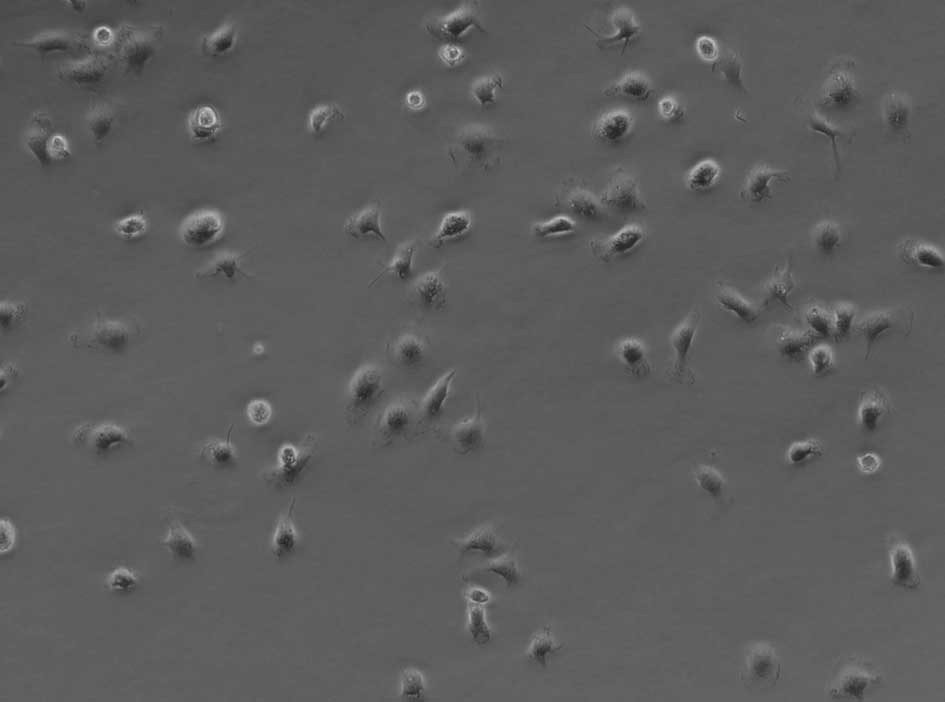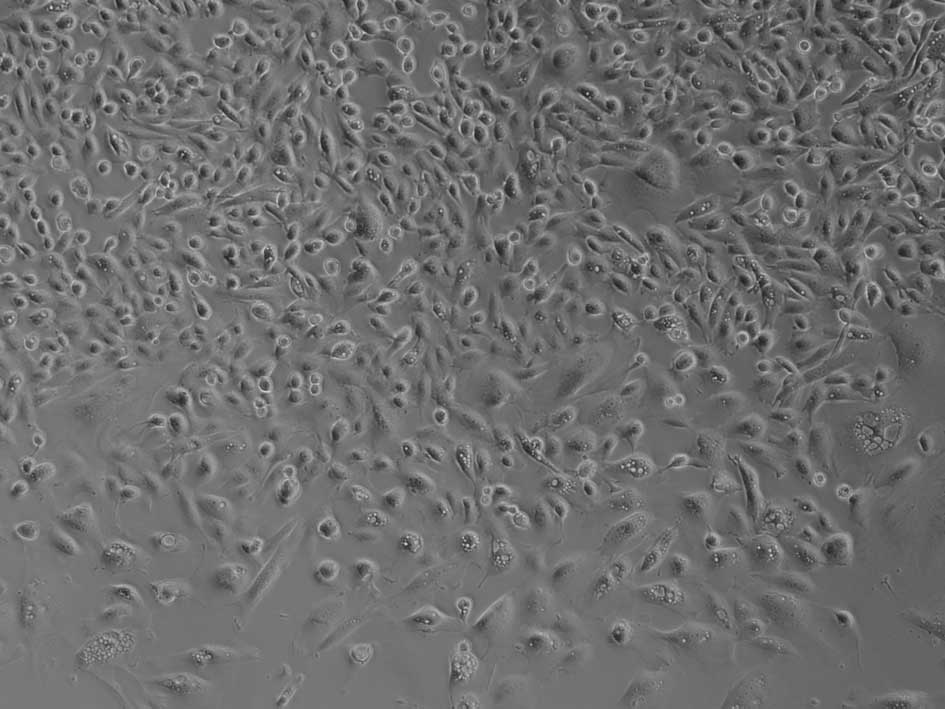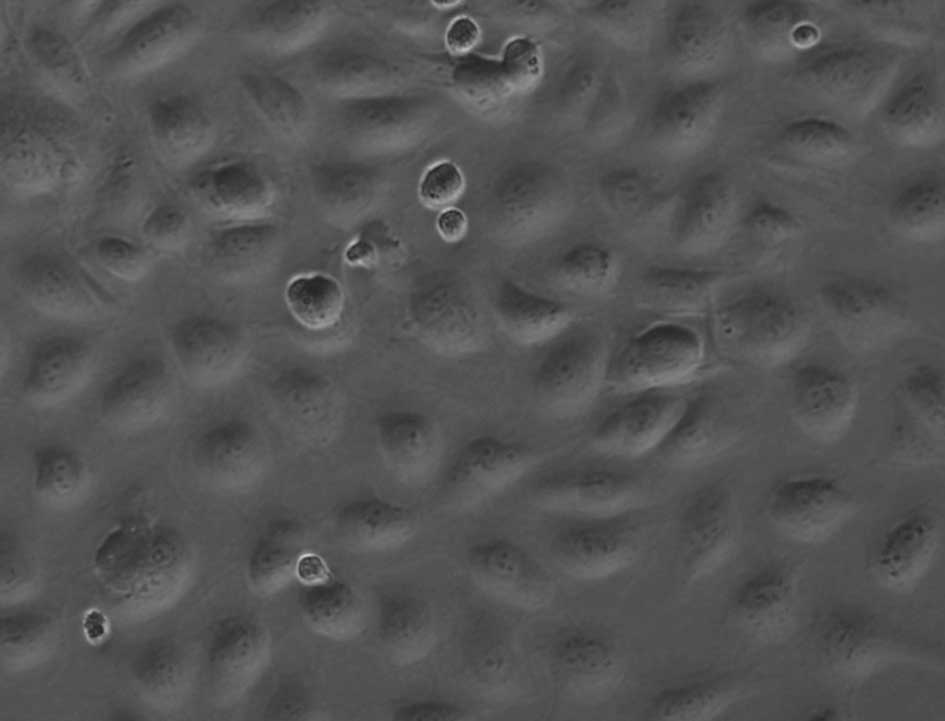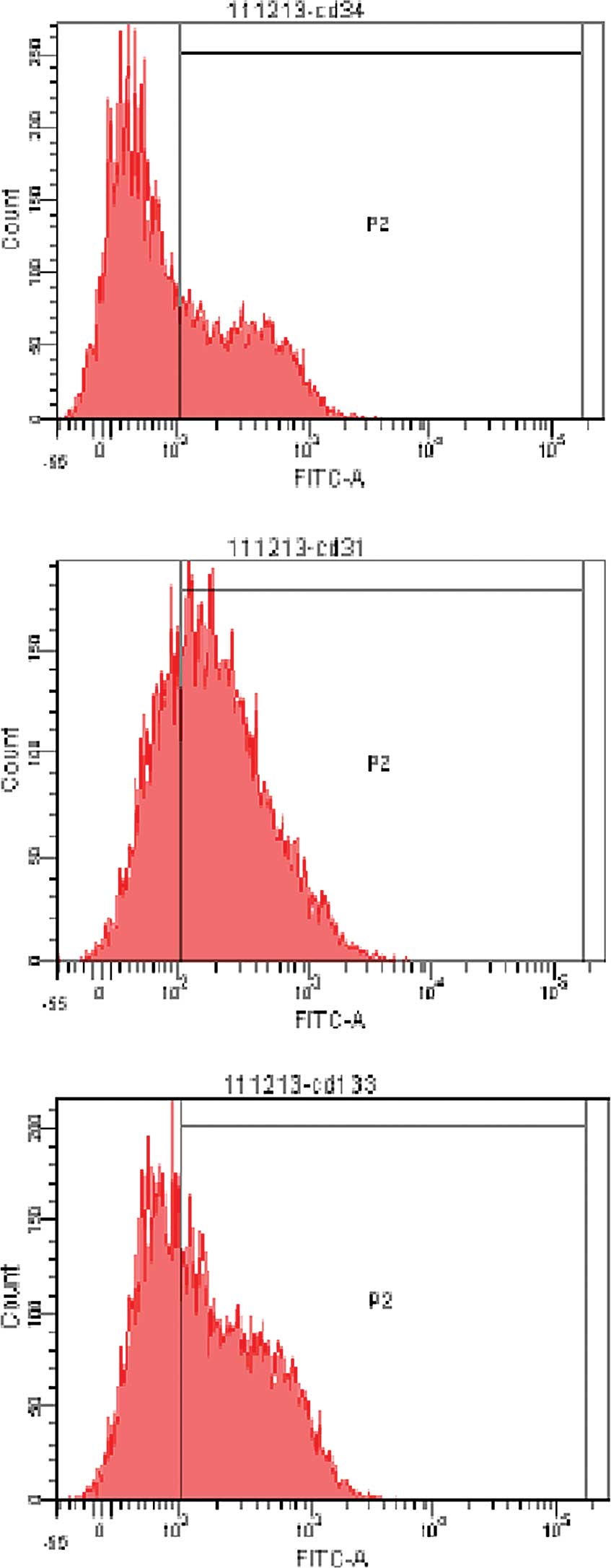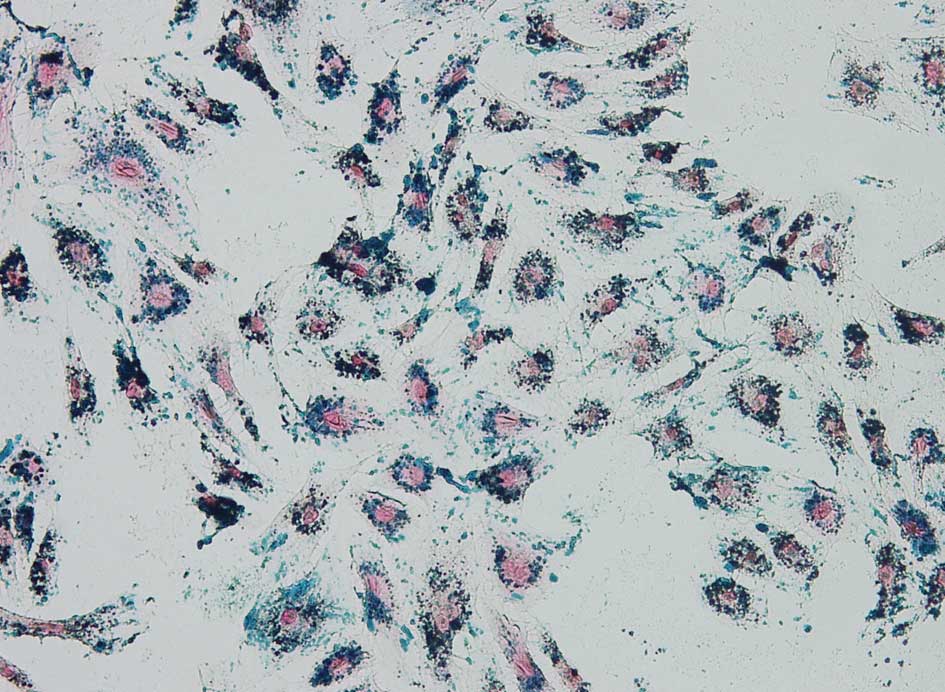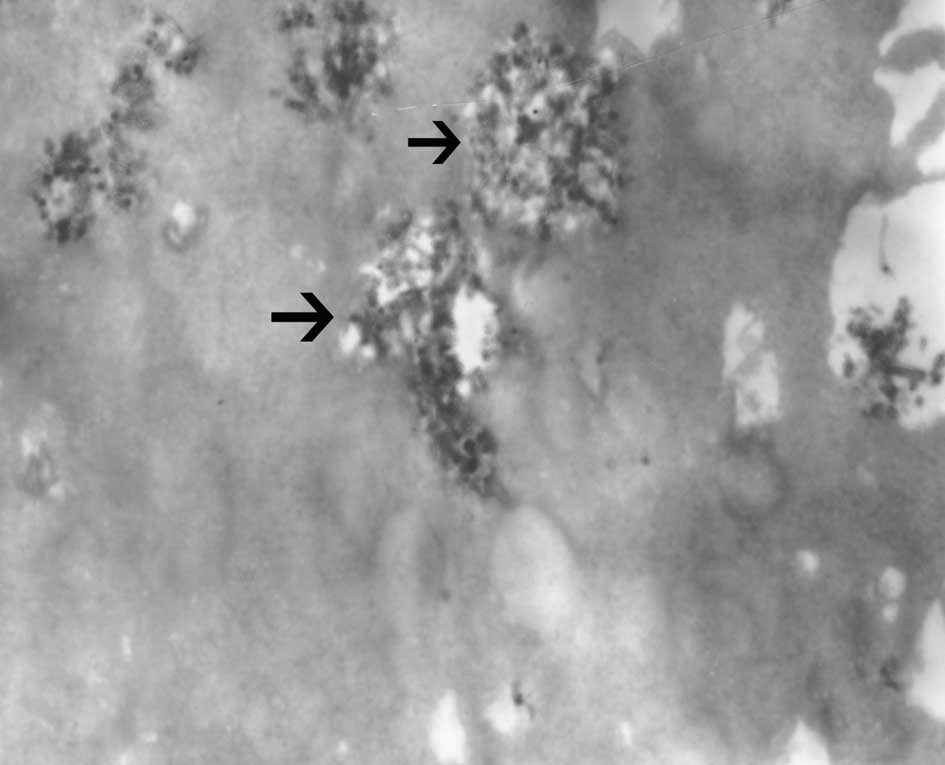|
1
|
Orlic D, Kajstura J, Chimenti S, et al:
Mobilized bone marrow cells repair the infarcted heart, improving
function and survival. Proc Natl Acad Sci USA. 98:10344–10349.
2001. View Article : Google Scholar : PubMed/NCBI
|
|
2
|
Sato Y, Araki H, Kato J, et al: Human
mesenchymal stem cells xenografted directly to rat liver are
differentiated into human hepatocytes without fusion. Blood.
106:756–763. 2005. View Article : Google Scholar : PubMed/NCBI
|
|
3
|
Qian H, Yang H, Xu W, et al: Bone marrow
mesenchymal stem cells ameliorate rat acute renal failure by
differentiation into renal tubular epithelial-like cells. Int J Mol
Med. 22:325–332. 2008.PubMed/NCBI
|
|
4
|
Murasawa S and Asahara T: Endothelial
progenitor cells for vasculogenesis. Physiology. 20:36–42. 2005.
View Article : Google Scholar : PubMed/NCBI
|
|
5
|
Schmidt-Lucke C, Rössig L, Fichtlscherer
S, et al: Reduced number of circulating endothelial progenitor
cells predicts future cardiovascular events: proof of concept for
the clinical importance of endogenous vascular repair. Circulation.
111:2981–2987. 2005. View Article : Google Scholar
|
|
6
|
Liang PH, Tian F, Lu Y, et al: Vascular
endothelial growth inhibitor (VEGI; TNFSF15) inhibits bone
marrow-derived endothelial progenitor cell incorporation into Lewis
lung carcinoma tumors. Angiogenesis. 14:61–68. 2011. View Article : Google Scholar : PubMed/NCBI
|
|
7
|
George AL, Bangalore-Prakash P, Rajoria S,
et al: Endothelial progenitor cell biology in disease and tissue
regeneration. J Hematol Oncol. 24:242011. View Article : Google Scholar : PubMed/NCBI
|
|
8
|
Gazeau F and Wilhelm C: Magnetic labeling,
imaging and manipulation of endothelial progenitor cells using iron
oxide nanoparticles. Future Med Chem. 2:397–408. 2010. View Article : Google Scholar : PubMed/NCBI
|
|
9
|
Yang JX, Tang WL and Wang XX:
Superparamagnetic iron oxide nanoparticles may affect endothelial
progenitor cell migration ability and adhesion capacity.
Cytotherapy. 12:251–259. 2010. View Article : Google Scholar : PubMed/NCBI
|
|
10
|
Wu H, Riha GM, Yang H, et al:
Differentiation and proliferation of endothelial progenitor cells
from canine peripheral blood mononuclear cells. J Surg Res.
126:193–198. 2005. View Article : Google Scholar : PubMed/NCBI
|
|
11
|
Stutchfield BM, Forbes SJ and Wigmore SJ:
Prospects for stem cell transplantation in the treatment of hepatic
disease. Liver Transpl. 16:827–836. 2010. View Article : Google Scholar : PubMed/NCBI
|
|
12
|
Shabbir A, Zisa D, Suzuki G, et al: Heart
failure therapy mediated by the trophic activities of bone marrow
mesenchymal stem cells: a noninvasive therapeutic regimen. Am J
Physiol Heart Circ Physiol. 296:H1888–H1897. 2009. View Article : Google Scholar : PubMed/NCBI
|
|
13
|
Zeng L, Hu Q, Wang X, et al: Bioenergetic
and functional consequences of bone marrow-derived multipotent
progenitor cell transplantation in hearts with postinfarction left
ventricular remodeling. Circulation. 115:1866–1875. 2007.
View Article : Google Scholar : PubMed/NCBI
|
|
14
|
Jickling G, Salam A, Mohammad A, et al:
Circulating endothelial progenitor cells and age-related white
matter changes. Stroke. 40:3191–3196. 2009. View Article : Google Scholar : PubMed/NCBI
|
|
15
|
Asahara T, Murohara J, Sullivan A, et al:
Isolation of putative progenitor endothelial cells for
angiogenesis. Science. 275:964–967. 1997. View Article : Google Scholar : PubMed/NCBI
|
|
16
|
Ding DC, Shyu WC, Lin SZ, et al: The role
of endothelial progenitor cells in ischemic cerebral and heart
diseases. Cell Transplant. 16:273–284. 2007. View Article : Google Scholar : PubMed/NCBI
|
|
17
|
Rotmans JI, Heyligers JM, Stroes ES, et
al: Endothelial progenitor cell-seeded grafts: rash and risky. Can
J Cardiol. 22:1117–1119. 2006. View Article : Google Scholar
|
|
18
|
Werner N, Kosiol S, Schieql T, et al:
Circulating endothelial progenitor cells and cardiovascular
outcomes. N Engl J Med. 353:999–1007. 2005. View Article : Google Scholar : PubMed/NCBI
|
|
19
|
Moore MAS: Putting the neo into
neoangiogenesis. J Clin Invest. 109:313–315. 2002. View Article : Google Scholar : PubMed/NCBI
|
|
20
|
Mihail H, Wolfgang E and Peter CW:
Endothelial progenitor cells: mobilization, differentiation, and
homing. Arterioscler Thromb Vasc Biol. 23:1185–1189. 2003.
View Article : Google Scholar : PubMed/NCBI
|
|
21
|
Roberts N, Jahangiri M and Xu Q:
Progenitor cells in vascular disease. J Cell Mol Med. 9:583–591.
2005. View Article : Google Scholar : PubMed/NCBI
|
|
22
|
Werner N and Nickenig G: Clinical and
therapeutical implications of EPC biology in atherosclerosis. J
Cell Mol Med. 10:318–332. 2006. View Article : Google Scholar : PubMed/NCBI
|
|
23
|
Modo M, Cash D, Mellodew K, et al:
Tracking transplanted stem cell migration using bifunctional,
contrast agent-enhanced, magnetic resonance imaging. Neuro Image.
17:803–811. 2002.PubMed/NCBI
|
|
24
|
Hung SC, Deng WP, Yang WK, et al:
Mesenchymal stem cell targeting of microscopic tumors and tumor
stroma development monitored by noninvasive in vivo positron
emission tomography imaging. Clin Cancer Res. 11:7749–7756. 2005.
View Article : Google Scholar : PubMed/NCBI
|
|
25
|
Shichinohe H, Kuroda S, Lee JB, et al: In
vivo tracking of bone marrow stromal cells transplanted into mice
cerebral infarct by fluorescence optical imaging. Brain Res Brain
Res Protoc. 13:166–175. 2004. View Article : Google Scholar : PubMed/NCBI
|
|
26
|
Weissleder R: Molecular imaging: exploring
the next frontier. Radiology. 212:609–614. 1999. View Article : Google Scholar : PubMed/NCBI
|
|
27
|
Daldrup-Link HE, Rudelius M, Oostendorp
RA, et al: targeting of hematopoietic progenitor cells with MR
contrast agents. Radiology. 228:760–767. 2003. View Article : Google Scholar : PubMed/NCBI
|
|
28
|
Togel F, Hu Z, Weiss K, et al:
Administered mesenchymal stem cells protect against ischemic acute
renal failure through differentiation-independent mechanisms. Am J
Physiol Renal Physiol. 289:F31–F42. 2005. View Article : Google Scholar
|
|
29
|
Yocum GT, Wilson LB, Ashari P, Jordan EK,
Frank JA and Arbab AS: Effect of human stem cells labeled with
ferumoxides-poly-L-lysine on hematologic and biochemical
measurements in rats. Radiology. 235:547–552. 2005. View Article : Google Scholar : PubMed/NCBI
|
|
30
|
Jendelová P, Herynek V, Urdziková L, et
al: Magnetic resonance tracking of human CD34+
progenitor cells separated by means of immunomagnetic selection and
transplanted into injured rat brain. Cell Transplant. 14:173–182.
2005.
|
|
31
|
Weber A, Pedrosa I, Kawamoto A, et al:
Magnetic resonance mapping of transplanted endothelial progenitor
cells for therapeutic neovascularization in ischemic heart disease.
Eur J Cardiothorac Surg. 26:137–143. 2004. View Article : Google Scholar
|
|
32
|
Crabbe A, Vandeputte C, Dresselaers T, et
al: Effects of MRI contrast agents on the stem cell phenotype. Cell
Transplant. 19:919–936. 2010. View Article : Google Scholar : PubMed/NCBI
|
|
33
|
Suh JS, Lee JY, Choi YS, et al: Efficient
labeling of mesenchymal stem cells using cell permeable magnetic
nanoparticles. Biochem Biophys Res Commun. 379:669–675. 2009.
View Article : Google Scholar : PubMed/NCBI
|















